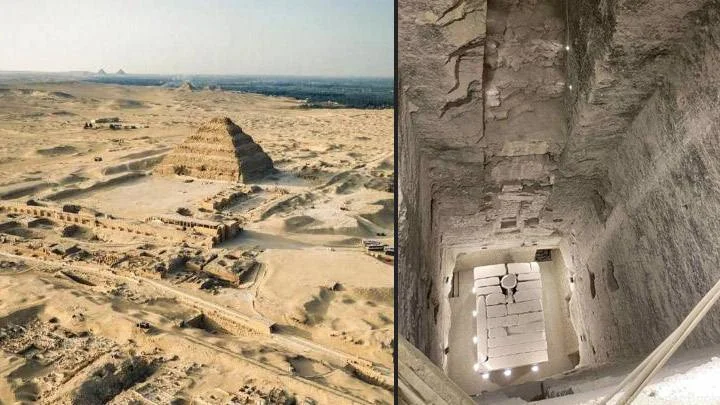A recent study has revealed new details about the construction of the step pyramid of the 3rd Dynasty Egyptian pharaoh Zoser, highlighting the presence of a complex water management system, including a hydraulic elevator in the center of the structure. This discovery, made by French engineers and published in PLOS ONE, suggests that the pyramid was built in the “volcano” style. In this method, workers lifted limestone blocks from the center of the pyramid, stacking them progressively.
Previously, it was believed that the limestone blocks were dragged across the desert, with workers pouring water on the sand to reduce friction, or transported by the River Nile. However, these theories did not fully explain how the ancient Egyptians managed to assemble the pyramids.

Other hypotheses suggested the use of systems of levers and pulleys to lift the blocks. The new research, however, points to even more sophisticated engineering. Dr. Xavier Landreau, an engineer and materials scientist, explains that satellite images show that Gisr el-Mudir, a rectangular stone enclosure to the west of the Saqqara necropolis, has the characteristics of a “check dam”. This structure could have been used to control floods and capture heavy objects such as trees and stones.
The stepped pyramid is surrounded by a dry moat that deepens into a trench to the south of the necropolis. The researchers described the southern section of the moat, with its linear structures cut into the rock and deep compartments, as functioning as a water treatment system, including a sedimentation tank, a retention tank and a purification system.
The retention tank part of the trench would be connected to the pyramid by underground pipes, pumping water through the center of the structure during construction.

The authors state that “in the southern section of the moat, we show that the rock-cut linear monumental structure, which consists of successive deep compartments, combines the technical requirements of a water treatment facility: a sedimentation tank, a retention tank and a purification system”. They suggest that the architects used sediment-free water from the southern section of the dry moat to erect the stone blocks through the center of the pyramid, in volcanic style. “The architects of this monument probably erected the stones in the center of the pyramid in volcanic style using sediment-free water from the southern section of the dry moat,” says the study.

This innovative technique demonstrates the ancient Egyptians’ advanced mastery of hydraulics, recognized in their irrigation canals and barges used to transport large stones. If proven, the theory offers a robust explanation for the construction of the first Egyptian pyramids and highlights the sophistication of the systems used by their builders. “The ancient Egyptians are famous for their mastery of hydraulics through irrigation canals and barges to transport huge stones. This work opens up a new line of research: the use of hydraulic energy to erect the massive structures commissioned by the pharaohs,” says the study.
The study was submitted to PLOS ONE on December 7, 2023. After two rounds of peer review, the article was formally accepted by PLOS ONE on June 27, 2024. Since July 23, 2024, it has been subject to further consultation and review by the PLOS ONE Editorial Board.


